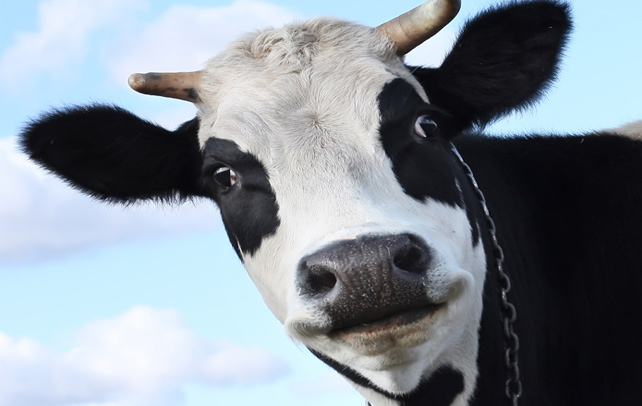Fun Facts About Cows

The association between human beings and cow stretch all the way back to pre-historic times. Although the recorded history traces its existence to the Neolithic Age, it is quite probable that the association between cow and men is even older. The cow is by far the largest contributor to dairy products and in many places the sole contributor. Cows are found in almost every continent except Antarctica. The products from cow have become an indispensable part of our lives. This long list includes milk, butter, cheese, meat and many other leather products. The bulls are also used for other purposes like ploughing. In many places of the world, they are used to pull carts and as beasts of burden. Indeed, in its association with human beings, the cow has undergone changes in its avatars with some culture even worshipping it. Here are some more facts about cow that you might be interested in knowing.
Fast Facts
Scientific Name: Bostaurus
Kingdom: Animalia
Phylum: Chordata
Class: Mammalia
Order: Artiodactyla
Family: Bovidae
Subfamily: Bovinae
Genus: Bos
Species: B. taurus
Weight: 600 to 900 kg
Number of Teeth: 32
Heaviest Calf: British Friesian cow (225 lbs)
Diet: Herbivorous
Natural Habitat: Throughout the world
Age: 15 to 25 years
Age of Maturity: 2 years
Gestation Period: 9 months
Number of Offspring: 1 to 2
Fun Facts About Cows
- A mature female is called a cow while an adult male is called bull and a young one is called a calf. A young female that has not had a calf yet is called a heifer.
- A group of cows is called cattle.
- The world total cattle population is estimated to be 1.3 billion.
- India accounts for 30 % of the world cattle population.
- There are about 920 different breeds of cattle in the world today.
- Cows are found in almost every country except on the continent of Antarctica.
- Cows were introduced to America in the year 1611.
- Cows are social animals and it is observed that not all members interact with each other even in a small cattle group, sometimes actively avoiding another member and seeking others.
- Cows communicate with each other through mooing and also facial expressions and body language.
- The cows do not have upper teeth. In their place is a strong pad of skin. This means that the cow does not bite. It swirls its huge tongue around its food for intake.
- A cow’s stomach has four chambers — the rumen, the reticulum, omasum and abomasum.
- The rumen is where half-digested food is stored, which is later brought back to the mouth as cud.
- The reticulum traps any indigestible hard material that the cow accidentally eats while the omasum plays the role of a filter. The abomasum is similar to the human stomach in its function.
- In a day, the cow spends 6 hours eating and up to 8 hours chewing the cud.
- Cows have a very good sense of smell and can detect odors up to 5 miles away.
- They can also hear lower and higher frequencies better than human beings can.
- Cows have a 360 degree view and are able to see many colours, but not red.
- Cows can gallop faster than horses through deep mud or soggy ground owing to their cloven hooves.
- A cow drinks up to 35 gallons of water a day and eats about 40 – 50 pounds of cattle feed each day.
- Cows also produce an incredible 35 gallons of saliva a day!
- A healthy 1000-pound cow can produce 10 tons of manure in a year.
- A healthy cow can produce around 200 000 – 350 000 glasses of milk in its lifetime.
- Cows produce around 90% of all the milk in the world.
- The Holstein cattle is the world’s highest production dairy animal.
- The USA consumes the largest amount of beef annually while Argentina has the highest per capita consumption.
- Brazil is the largest exporter of beef followed by Australia.
- Hindu tradition looks at cows as sacred and cows are allowed to roam free on the streets.
- Cows can live up to 25 years of age with the oldest ever being 48 years.
- Counting the rings on the horns and looking at the wear of the teeth are methods of determining the cows age.









